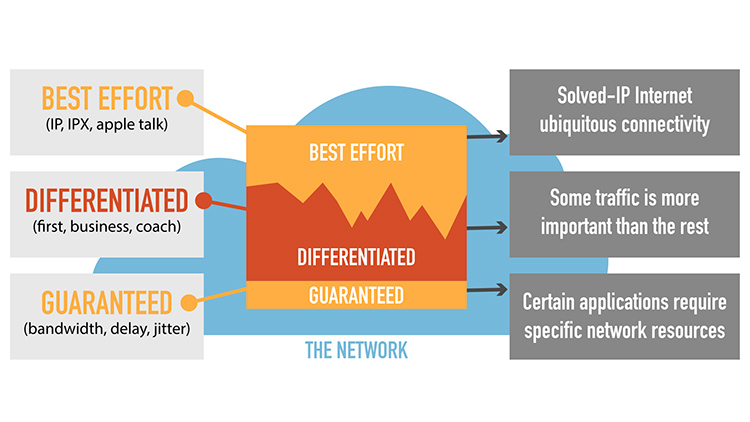Professionals who work with IP networks often talk about solving problems by using IP quality of service (QoS) settings. Today, we’ll accomplish two things. We’ll clarify the term IP QoS and we’ll give you some insight into what it can and cannot do to improve the delivery of audio and video.
IP QoS depends on the code that is written into the IP header of a packet. The field was originally called the type of service (TOS) field. However, it is usually referred to as the DiffServ (differentiated services) or DS field. The code uses 6 bits, so there are 64 possible codes. However, for a combination of reasons, only a few are actually implemented. Because the code is placed in the IP header, it means it is only read by devices that actually read that information. These devices will always include routers but may or may not include Ethernet switches, firewalls, severs, or end stations. Often, the purpose of writing the code in a packet is to send communications and instructions to the routers in the path. It generally means a request to provide this packet with priority over others. If the value in the field is zero, network devices assume no priory is necessary.
There are many techniques used to implement QoS but nearly all are based on creating separate queues. If two queues are created, one for high priority traffic and another for standard traffic, the high priority queue might forward packet twice as often as it does from the standard queue. Or, it might not forward any packets from the standard priority queue until the high priority traffic queue is empty. There are a significant variety of different techniques and algorithms available to implement this function. There are even textbooks dedicated to this complicated subject.
IP QoS is not the only way to obtain priority for packets. It can be done at the Ethernet level with standards like IEEE 802.1P and 802.1Q. These implement priority based on a code placed in a tag which is inserted in the Ethernet portion of the packet.
Whether you implement priority with IP or Ethernet tags, you’ll likely use it to expedite voice traffic or video conferencing traffic over conventional data traffic. One thing you should be aware of is that QOS setting will not defeat the congestion collapse issues associated with the recent use of very large buffers in the Internet. That requires the use of active queue management techniques and is an expanding area of considerable research.
Phil Hippensteel, PhD, teaches at Penn State Harrisburg. He is a regular contributor to AV Technology and Sound & Video Contractor.
